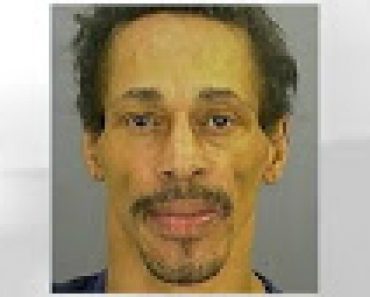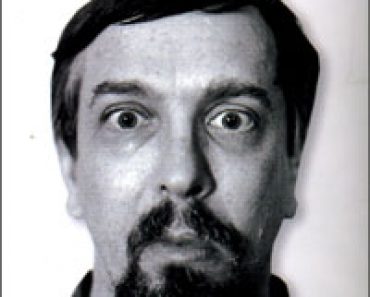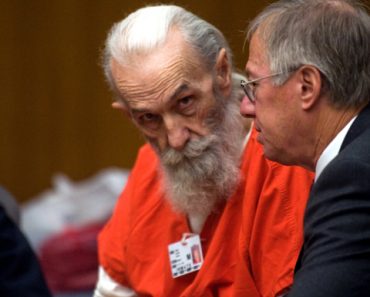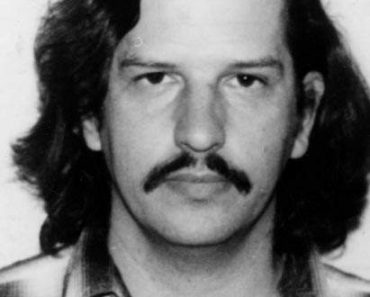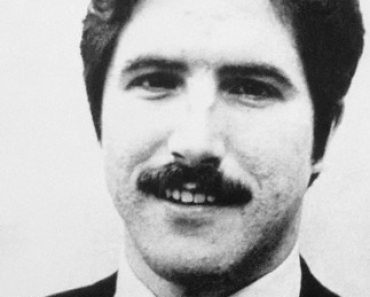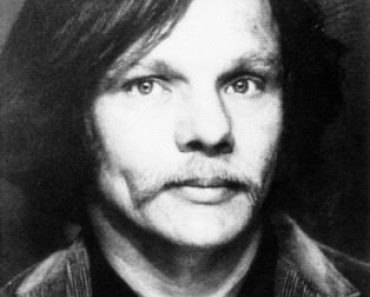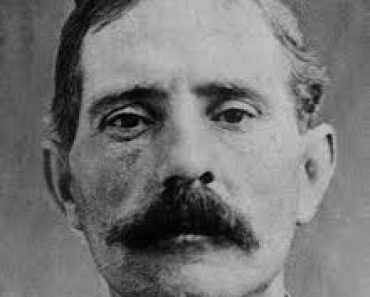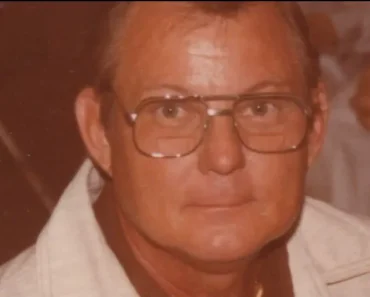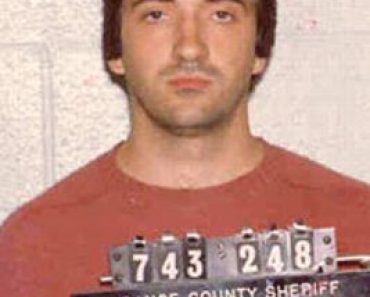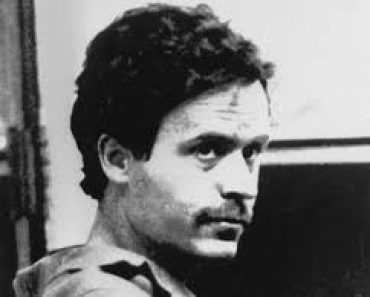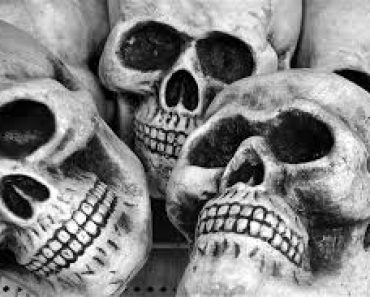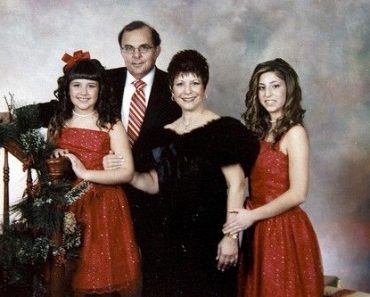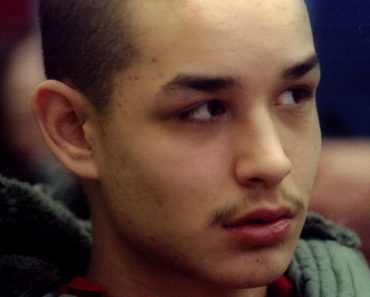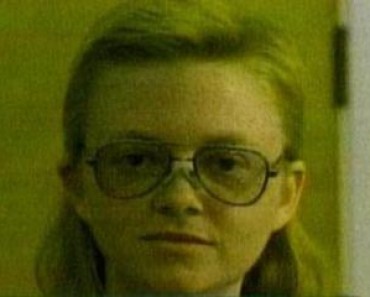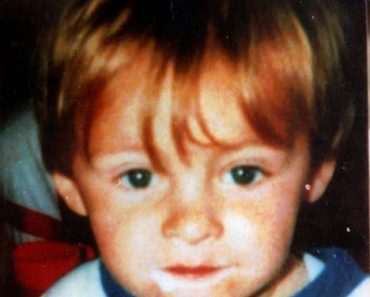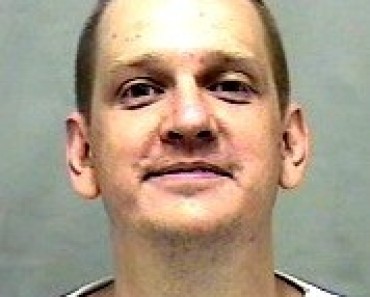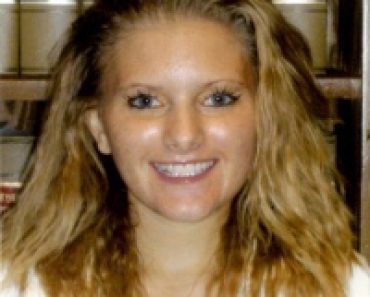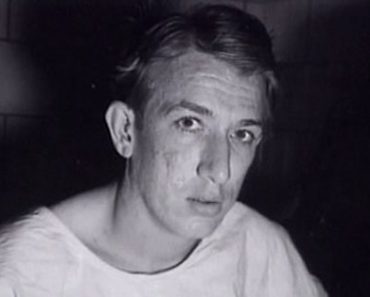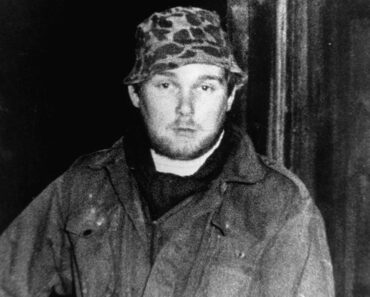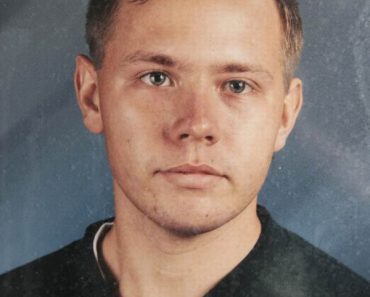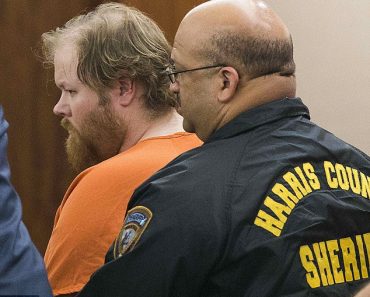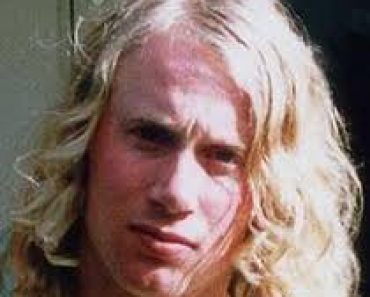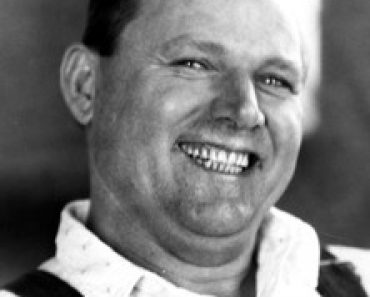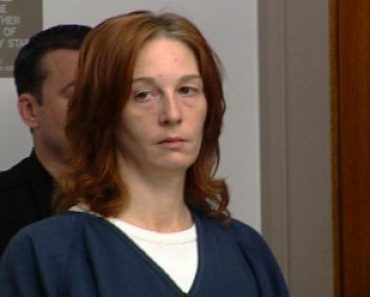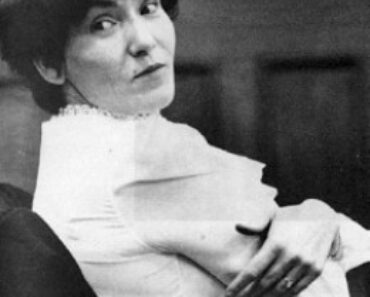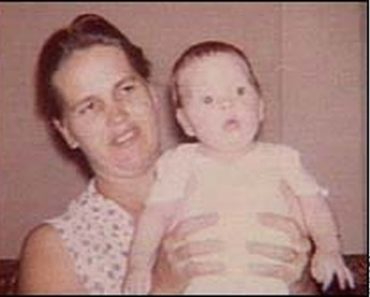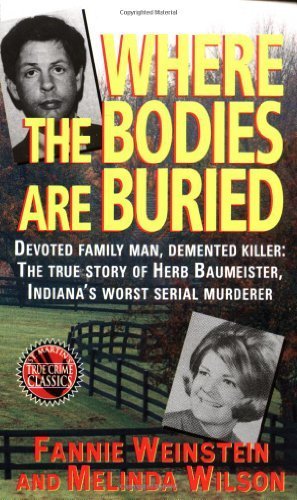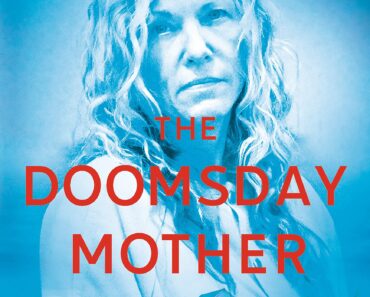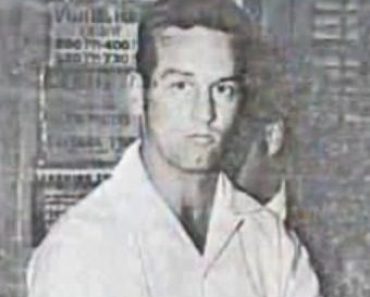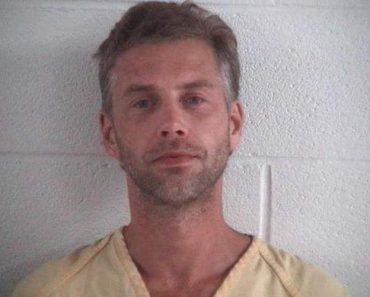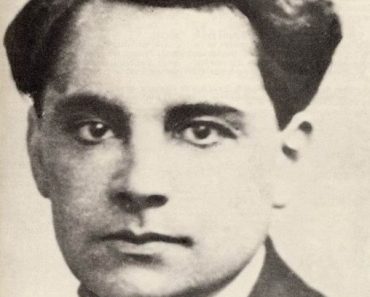Herbert Richard Baumeister | Serial Killer
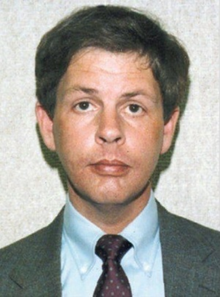
Herbert Richard Baumeister
Born: 04-07-1947
Bodies in The Yard
American Serial Killer
Crime Spree: 1980–1996
Death by Suicide on 07-03-1996
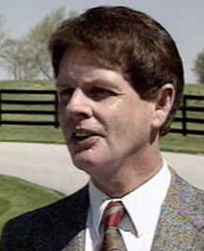
During the first several years of the 1990’s, the citizens in and around Indianapolis, Indiana might have stumbled on a very brief article in the local newspapers about how certain young men were disappearing from the streets of their town never to be seen again. In each case, the episodes mirrored each other. Only the names changed. But, the articles grew no larger nor attracted much attention. All the prodigal sons were gay or were suspected of leaning in that sexual direction. Being gay, they were a coming and yet steadily outcast breed of citizens in a very conservative “Bible Belt”. Even the officials remained lethargic; common belief was that the “victims” might simply have gone on to other, larger, more glitzy towns like San Francisco or New York where homosexuality was not considered wayward at all. The only victims here, thought the police, were the families these young men abandoned without a goodbye.
The Numbers Kept Growing
But, as the number of disappearances tolled up, a few members of the community began to realize that there might be something wrong in the Bible Belt. The first to suspect foul play was a private detective named Virgil Vandagriff. The first, in fact, to start putting two and two together to actually add up to four. However, even he, and the believers he eventually recruited from among the law enforcement agencies in the two surrounding counties who took up the search for a killer, were not prepared to find a monster.
Their trail ended in the wooded back yard of a huge private estate where the skeletons of the reported missing persons, and several others, were uncovered. Then the media took notice, then the camera trucks rolled in, then the killings took the headline.
The Grave Yard
However, who can condemn the media circus that followed? For perhaps it was not the blood and gore and spittle of the usual sensationalism that often follows a murder. Here, there was more. The graveyard, being dug up by the shovels-full, was unearthing more than bone. With each stab of a shovel into the dirt humankind itself was feeling the eerie pain of reality: that there exists, in a dark corner of Man, a skeleton that may come out of the closet at any moment, shouting.
The killer, the psycho, the demon, whatever you want to call Herbert Richard Baumeister, was a man with a surface so normal that, when his deeper psyche was discovered, made those who knew him wince. He was a family man, an entrepreneur who supported local charities. He looked normal and talked normal…until you really got to know him.
Components of a Serial Killer
“Herbert Richard Baumeister fit all the components of a serial killer,” Vandagriff says in a not-at-all- surprised tone, “among them the ability to keep his crimes in control and silent under an everyday nonchalance. He was a business owner whose store many townspeople frequented. My own office was only a mile and a half away from his place. I never met him, but from what I understand he wasn’t the type of guy you’d at first suspect of being a sexual psychopath.”
Vandagriff pauses and thinks about what he just said. In addition, his voice that reeks of experience in dealing with the darkest side of humanity, grows more assertive as he adds, “The danger signals are always there in people of Baumeister’s caliber. Trouble is the public ignores them. In Baumeister’s case, even his wife ignored them. Lethargy – it’s the serial killers’ greatest strength.”
Herbert Richard Baumeister
Herbert Richard Baumeister was born April 7, 1947, to Dr. Herbert E. and Elizabeth Baumeister in the Currier & Ives Butler-Tarkington area of Indiana. A sister, Barbara, was born in 1948 and two brothers followed after, Brad in 1954 and Richard in 1956. As the father’s medical practice progressed — he was an anesthesiologist — the family eventually moved to affluent Washington Township.
Herbert’s childhood seemed normal, according to the book, Where the Bodies are Buried, by Fannie Weinstein and Melinda Wilson. However, they continue, “by the time he reached his adolescence, it became apparent that something about him wasn’t quite right.”
Strange Young Herb
A close school pal named Bill Donovan recalled that Herb would fall into strange reveries, often pondering repulsive things like what it would be like to taste human urine. And doing strange things. One morning on the way to school, he picked up a dead crow that had been hit by a car, shoved it in his pocket, then while the teacher wasn’t looking dropped it on her desk.
Irresponsible and often combustive, Herb’s behavior soon caught the attention of his father, who secreted his son off to mental examinations. A lengthy series of tests eventually diagnosed the boy as schizophrenic, having a two-or-more-sided personality base. However, there is no record of further treatment.
Because his high school, North Central, focused on sports activities, pedantic bookish Herbert Richard Baumeister could not become part of the “in” crowd. He tried to be one of the bunch, but, “he just didn’t blend in,” recalls Donovan. He withdrew to himself and spent many hours alone. As for his interest in dating, friend Donovan answers, “Zero, I never saw him date.”
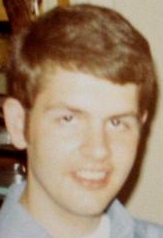 College for Herbert Richard Baumeister
College for Herbert Richard Baumeister
In his college years, Herbert Richard Baumeister remained as ever directionless. He dropped out in his freshman year, returned for a semester here and there throughout the next four years, but never graduated. Nevertheless, through his father’s persistence — his father was a respected man in town — the Indianapolis Star, the major newspaper, hired teenage Herb on as a copy boy.
Garry Donna, an advertising executive who worked for the paper, remembers that Herbert Richard Baumeister was “sensitive” as to the way he was viewed and treated by the higher ups. He obsessively wanted to be somebody. He dressed well and was eager, but again, did not really fit in.
One odd incident occurred when Herb offered to drive Donna and his friends to the IU football game in hopes that he might become one of the gang. When the day came, he showed up in a hearse, probably acquired through connections with the hospital where his father worked, and, with lights flashing, raced to the game, laughing all the way. “People started pulling off the road,” recalls Donna. “He even wore a chauffeur’s cap. He thought it was kind of funny.” Donna, however, his friends and their dates, wondered what kind of oddball was at the steering wheel.
Weird and Weirder
And the weirdness continued, say Weinstein and Wilson, “It wasn’t long after he started working at the Bureau of Motor Vehicles — another job his father is rumored to have secured for him — that Herbert Richard Baumeister began…ranting and raving at fellow employees for no apparent reason. His tenure over the years marked odd behavior, according to former co-workers and others.” One Christmas he “raised eyebrows” by sending co-workers a card with a photo of him and another guy dressed in drag.
Despite his in-house personality conflicts and erratic deployment, the bureau nonetheless noticed an apparent go-get-’em attitude mixed with a high degree of intelligence and so it wasn’t long after that he earned the title of program director. Where others might have at this point taken the challenge with an exerted professionalism, Herb’s antics increased and flourished.
“Herb had displayed what those who knew him characterized as a bizarre sense of humor,” Weinstein and Wilson attest. “While at the BMV, it took the form of urinating on his boss’s desk. And it was no secret around the office who the culprit was. Still, Herbert Richard Baumeister somehow managed to avoid being fired (until) he urinated on a letter addressed to the Governor of Indiana.”
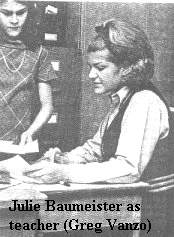 Herbert Richard Baumeister Gets Married
Herbert Richard Baumeister Gets Married
In November, 1971, Herbert Richard Baumeister had married Juliana Saiter in the United Methodist Church in Indianapolis. Julie was a college graduate and was introduced to him by a mutual friend. She was attracted to the tall, light haired, boy-faced Baumeister and, in their initial chat, they discovered they shared many things in common. Both were Young Republicans and both yearned to have their own business one day.
Julie quit her job as a high school journalism instructor in the latter half of the 1970’s to concentrate on having a family. Besides, Herb was earning decent wages at the BMV. Three children followed: Marie in 1979, Erich in 1981 and Emily three years later.
When Herb was asked to leave the BMV, the ever-faithful Julie returned to teaching to supplement her husband’s income through an assortment of odd jobs. He eventually wound up working for a thrift shop and, although he felt menial at first, soon realized the potential available in a place like that. He and Julie talked it over and, based on Herb’s acquired knowledge of running such an outlet over the three years he worked there, decided to invest what money they had into their own store. They borrowed $4,000 from Herb’s now-widowed mother and in 1988 opened Sav-a-Lot Thrift in conjunction with the highly respected Children’s Bureau of Indianapolis, a centenarian charity benefiting the area’s families.
 Founder of Sav-A-Lot Store
Founder of Sav-A-Lot Store
The shop, located on 46th Street, sold used clothing, household goods and a number of second-hand items. The inventory technically belonged to the charity, which in turn received a contracted percentage of the proceeds. Shoppers found the Sav-A-Lot tidy and offering only quality merchandise and it quickly became a popular place to shop for families on a budget. In no time, Herb and Julie Baumeister received high praise from the Children’s Bureau, whose human cause greatly benefited from the couple’s obvious management skills. The store earned $50,000 its first year. Soon, they opened a second store.
Successful business people now, in 1991 the Baumeisters moved from their middle-class home into the fashionable Westfield district, nearly 20 miles from Indianapolis, in Hamilton County. Here they bought, on contract, an elegant Tudor-style home called Fox Hollow Farms, complete with four bedrooms, an indoor swimming pool and a riding stable. Its eighteen-and-a-half acres provided the country tranquility in which Julie always hoped to be able to raise her children. The couple was living “the American dream.”
On The Surface
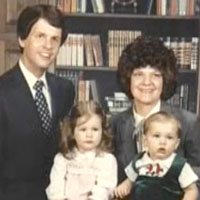
“Herbert Richard Baumeister called the shots and Julie always went along for the ride,” explains John Egloff, the Baumeister’s one-time lawyer, who felt Julie was forced to live in Herb’s shadow. In Where the Bodies are Buried, he discusses his perception of the couple. “Whenever they disagreed about what should be done with respect to a particular matter, Herb would basically take over the conversation. He’d say, ‘Julie, that’s not what we’re going to do…’. Julie deferred to Herb, but she wasn’t very happy about it.”
More than once, the couple split, albeit briefly.
The house itself seemed to adopt the tension within its walls. Neighbors and business associates who entered the Fox Hollow estate later recalled the rooms as being cluttered and unkempt. The Baumeisters, they said, lacked order. Or, more appropriate, ignored it. The once groomed grounds of the manor house became overgrown.
Julie would often take the children to visit Grandma Baumeister weeks on end at her condominium on Lake Wawasee. The couple would tell their friends that Herb didn’t go along because of business pressures.
Sex and Herbert Richard Baumeister
Behind the bedroom door, there was little pacificity to their marital problems. “Julie later admitted that she and Herb had engaged in sex only six times in the 25 years they were married,” detective Vandagriff explains. And, according to authors Weinstein and Wilson, Julie never saw her husband nude. “Herb dressed in the bathroom (and) when it came time to go to bed he would always put on pajamas (slipping) between the sheets.” He was ashamed of his skinny body.
“That should have been a tip-off to Julie that something was wrong,” Vandagriff adds, reflecting again on those “danger signals” of bad, bad things to come. “But, she was an over-trusting woman who, despite their problems, put complete stock in her husband’s actions.”
Julie, probably in trying so hard to reconcile their differences, threw her mental state into a complete dependency on Herb. “I think deep inside she chose not to see the signals,” Vandagriff continues.
And that may have been the reason why she believed a preposterous alibi in 1994. Son Erich had been playing in the family’s wooded back yard when he found, half buried, a complete human skeleton. Showing the gruesome discovery to his mother, Julie anxiously awaited her husband’s arrival that day home from the shop. When she showed him the curiosity, he explained (in quite a monotone) that it had been one of his doctor father’s dissecting skeletons; he had had it stored in their garage and buried it in the yard only after he decided to clean out the garage.
“Simple explanation,” said he. Subject closed.
Virgil Vandagriff
Virgil has been in the law enforcement arena, and has seen and heard enough drama in his life as a Marion County sheriff, to immediately spot trouble lurking in the shadows around the corner. He began his successful private investigations firm in Indianapolis in 1982, conducting that business part time until he retired from the county in 1989. Since retirement, his firm, located on the west side of town, operates virtually around the clock. He is one of the most respected people in town; hi-tech and astute, the graying and dignified Vandagriff has a reputation for getting the job done.
One of his more popular cases is the locating of missing persons. “The way it works here in Indianapolis is that persons are not classified as ‘missing’ until they are gone 24 hours,” he explains. “The case then goes to a district detective and if they don’t find them in 30 days it travels to the Missing Persons Bureau for them to investigate. Now, to the general public, this seems like a lot of red tape and highly absurd. Parents don’t want to wait to find out what happened to their kid, and wives don’t want to wait to see what happened to their husband. So, they come to me.”
When the mother of 28-year-old Alan Broussard approached him in early June of 1994 to tell him her son was missing, Vandagriff didn’t alarm. Many cases, he states, usually turn out to be mere runaways with little or no foul play involved. He nevertheless began to investigate the case. Alan Broussard, he learned, had had his share of troubles. A heavy drinker, he was also gay in a community that pretty much shunned that lifestyle. He was last seen, in fact, leaving a gay bar called Brothers. Virgil issued posters throughout Indianapolis and elsewhere that ran Alan’s photo and asked for information from any citizen who might have seen him.
Virgil Senses Trouble
If Vandagriff at first perceived no ill intent behind Alan’s disappearance, his perception of what most likely did happen to the man changed quickly. Before the end of July, he became convinced that, as he puts it, “Indianapolis had a serial killer on its hands.” Three incidences occurred, tumbling on top of each other.
First, Vandagriff learned that an Indianapolis police detective named Mary Wilson was working on the disappearance of other gay men throughout the area, all similar to the Broussard mystery. Even their physical appearances and ages paralleled.
Second, he came across a small article in a magazine called Indiana Word about a man named Jeff Jones who had disappeared mid-1993, a year earlier. This gay lifestyle publication, which Vandagriff’s investigators picked up while scouting the gay bars for information on Broussard, reported that Jones, 31, had evaporated into thin air from the streets of Indianapolis. Vandagriff, in researching Jones, discovered that the prodigal shared a background of like social indifference and wayward habits as the others.
Tripping The Trigger
But, what convinced Vandagriff to regard these vanishings as more than circumstantial was the event of yet another disappearance. The latest took place in July. This time, Roger Allen Goodlet, 34 years old, left his mother’s place, where he lived, to visit a gay bar on 16th Street. As with the other two men, roughly the same age and with the same casual approach to life, Roger was swallowed into oblivion.
As with Mrs. Broussard, Goodlet’s mother came to Vandagriff because she didn’t want to wait the obligatory legal period. She “wept as she told Virgil about Roger, his childhood demeanor, his trusting nature, his tendency to drink too much — the whole litany of factors that made Roger vulnerable alone out on the streets,” to quote the book Where the Bodies Are Buried. To Vandagriff, listening to her recite “felt like a repeat of those sessions with Alan Broussards’s mother.”
“The fates of these three men were too close to ignore,” he notes.
Vandagriff and his investigator, Bill Hilzley, scoured the gay bars in town, but didn’t come up with much. Owners and frequenters of the establishments seemed too frightened to talk. They did learn,. however, that Goodlet had left Our Place with another man (whose description remained vague) in a light blue car with an Ohio license plate.
The Breakthrough
Unfortunately, Vandagriff found the police “disinterested” in the information he supplied. But, the private detective was not to be discouraged. He knew he was on to something important and had enough experience under his belt to comprehend the logic in a case like this. Sometimes breakthroughs come from the strangest places and in the most unexpected fashions And, as he surmised, one indeed presented itself in August, only weeks after he entered the case.
A fellow named Tony Harris (not his real name) had known Roger Goodlet from the gay bar scene. He had seen Vandagriff’s posters and believed he had stumbled onto some information that might solve the puzzle over Roger’s whereabouts. His story was incredible, but he swore it was true. He said that he had been with a man whom he was sure was a serial killer. When he tried to tell the local police, they treated him like he was crazy; the FBI suggested he had been on a drug trip. Phoning Roger’s mother, she put him in touch with detective Vandagriff.
The Informant
Tony Harris had seen and talked to the killer. In fact, in retrospect, he seems to have miraculously escaped with his life. Over the next several weeks, Tony made several visits to Vandagriff’s office, each one yielding a little more information as he recalled it. Or chose to tell it. Simply, Tony feared for his life. But, as he came to know and trust Vandagriff and his secretary Connie Pierce, he opened up more and more each time. His interviews were recorded with his permission.
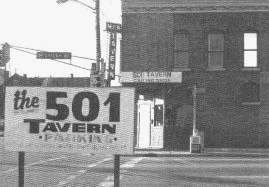
According to Tony, he had chanced upon his suspect in a local gay bar in town; the 501 Club; actually, he had seen him before in Indianapolis’ gay night scene, but couldn’t place him — tall, lanky and silent — but they had never spoken. On this particular August evening, what had drawn Tony’s attention to the man was the extreme way he seemed to scrutinize the Roger Goodlet/Missing Persons poster that hung behind the bar counter.
“I just had a feeling, by the way he was captivated by that poster, that he was the man who killed my friend Roger,” Tony told Vandagriff. “Something in his eyes.”
The Story Continues To Unfold
Tony’s story unfolded. Suspecting this stranger of Roger’s disappearance, he introduced himself to the man in hopes to find out what he might know. The man, who called himself Brian Smart, evaded Tony’s subtle inquiries about Roger, but, smiling, invited Tony out for the night. He explained he was a landscape artist from Ohio, currently living in an empty house outside of town that he was preparing for the new owners yet to move in. “Let’s go back there for a cocktail and a swim,” he asked Tony. Tony reluctantly agreed. And then a night of abstract weirdness began.
Outside, they got into Brian’s gray Buick with an Ohio license plate. They headed north on Meridian Street where “it turned into U.S. I-31…the downtown expanses disappearing behind them as the greener suburbs emerged,” writes Fannie Weinstein and Melinda Wilson in Where the Bodies are Buried.” Tony didn’t often venture this far north of Indianapolis, but he knew they were heading into ‘rich people’ territory.” They finally drew off the highway “somewhere past 121st Street,” made several more turns, then entered a quiet locale “dotted with expensive new homes and horse farms, set off by split-rail fences. At an asphalt driveway marked by a sign atop a landscaped stone embankment, Brian slowed. Something ‘Farm’ was all Tony could make out on the sign.”
A Date With Herbert Richard Baumeister
The Buick paused before what was a large Tudor country mansion, unlit. They alighted from the auto and entered the dark house through a side entrance, passing through the garage where Tony spotted several cars parked, among them an antique car. Entering the house, Tony thought it seemed haphazardly furnished; even in the moonlit dimness, he could see that there were items of furniture and boxes everywhere. He followed Brian through a succession of rooms until they came to a descending stairwell.
“C’mon,” Brian motioned down, “there’s electricity in the basement,” and led him to a large recreation room at the bottom of the steps. Like the upper quarters, this room with its wet bar and connecting indoor pool might have been pleasant were it not for an array of clutter. The site of mannequins around the room, staged in various poses, shot a chill through Tony.
“I get lonely down here.” Brian noticed Tony’s interest in the grotesque forms. “They give me company.”
Refusing to take a drink as offered, Brian noticed his host’s countenance darken. Nevertheless, Brian insisted that they party, but first excused himself briefly. Upon his return, he seemed looser, less timid; gabbier. “Tony thought for certain that he must have done some drug in his absence — cocaine, he speculated.,” Weinstein and Wilson add. “He’d seen the same buoyancy in other people who were coked up.”
The Subject Does Dark
Brian convinced Tony to go for a swim in what, he discovered, was a lap pool with equal depths at both ends. While the guest swan naked, Brian talked about a number of subjects. Eventually, however, his expression changed. “I just learned this really neat trick,” he whispered, gathering up the hose that lay serpentined on the edge of the pool. “If you choke someone while you’re having sex it feels really great. You really get a great rush…”
“You just want to pinch these two veins,” he continued, indicating the carotid arteries in his own neck. “And it’s such a great buzz. You should see how someone looks when you’re doing it to them. Their lips change color — that’s how you can tell it’s working.”
Listening to this Brian, if that was his real name, carry on about his asphyxiatic/ sexual delights now convinced Tony that Brian had murdered Roger — and God knows who else!
“Do it to me!” Brian said. He stripped and lay down on a foldout couch in the corner of the room and directed Tony to slip the hose about his throat. As he did so, he masturbated.
“By then, Tony was so horrified, so numb, he felt compelled to do whatever Brian wanted . Too, it was clear, that Brian had been through this routine many times,” Weinstein and Wilson resume. “The only way to find out how these particular sex games ended, Tony reasoned, was to take it all the way with this guy.”
Playing The Game Out
Tony placed Brian’s hands on his neck now and lay down, awaiting the next step with horror. Brian instinctively took the bait. Bending over his new playmate, Brian tied the choker tight around his throat, his face flushed with anticipation. As the garroting became intense, as the blood pressure mounted in his head, Tony didn’t wait for further results. He feigned unconsciousness.
Eyes closed, he felt Brian ease up. A silent pause. Brian whispered his name. Another pause before he began shaking him violently. When Tony opened his eyes and grinned, Brian raged. “You scared the shit out of me! You know you can die doing this! There have been accidents!”
With that, Tony decided to be frank:” Is that what happened to Roger Goodlet? Was he one of your accidents? Were there others?”
If Tony hoped, however, to raise a confession, he was disappointed. Brian only stared at him, not comprehending, lost in a daze of whatever substance he had ingested. His only response was a fool’s grin. “Brian acted as if the whole thing were an amusing little game that he controlled completely,” continue the two authors of Where the Bodies Are Buried.
The game Doesn’t End Here
Eventually, Brian’s speech slurred and he was overcome with sleep. This gave Tony a chance to scout the upper quarters of the house, for he didn’t believe Brian’s story that he was only the landscaper here nor that the estate’s owners had not yet moved in. His doubts were confirmed, for in the dark house above he encountered children’s toys and women’s clothing in all the rooms; the place was obviously lived in for some time. Now, if only he could find out Brian Smart’s real name. This one sounded phony and, he figured, the police would love to have this dude’s real identity.
Creeping back downstairs, he began fingering through Brian’s tossed-off trousers for a wallet. But, when the other snorted and shook, as if awakening, Tony dropped the trousers. Unfortunately, before he had another opportunity to spy, Brian awoke.
It took some convincing, but Tony finally made Brian drive him back to town. Dressing, searching for his car keys, he then led Tony back to the Buick, which he nosed back toward the direction of Indianapolis.
“Hey, you’re a good sport,” Brian congratulated his partner. “You really know how to play!” As the car rolled into town, he made Tony promise to meet him at the 501 Club the following Wednesday.
Herbert Richard Baumeister Doesn’t Show
Tony wasn’t very clear where Brian’s house was actually located, but it seemed to be in either Westfield or Carmel, both very exclusive suburbs in Hamilton County. By the directions given, Vandagriff knew the place was outside Marion County, in which Indianapolis sits. The trouble was that the vague description of the house as stated by Tony could fit almost any one of a hundred estates in that area. All he had to go on was that a sign posted near the driveway read something about “Farms”
But, Vandagriff drew anxious as the appointed Wednesday neared for Tony’s and Brian’s rendezvous. He posted one of his men, Steve Rivers, outside the bar while Tony loitered inside. Because Tony had spotted several cars in the deviant’s garage, Rivers’ watchful eyes studied the faces of anyone in any automobile that seemed to cruise by. No one fit Brian’s description: brown-haired, long-faced, pale.
By the time the bar closed that evening it became apparent, much to Vandagriff’s disappointment, that Tony Harris had been stood up.
Mary Wilson
Realizing that he had uncovered a much larger case than that of a missing person, Vandagriff notified the Indianapolis Police Department. While the police had earlier sent Tony and his incredulous story packing, Virgil took Tony Harris and his information to the one person in the department whom he believed would see the value in the tale. She was the no-nonsense detective Mary Wilson who, Vandagriff knew, was already working on a number of other missing persons cases. He found in her a ready ear.
Mary Wilson, dark-haired, pretty and in her mid-forties, had steadfastly worked her way up through the ranks of the Indianapolis Police Department, from “beat cop” to detective. She had served in the sex crimes division, where she quickly learned the pathology of sexual criminals and the abberations connected with their acts. By the time she transferred to Missing Persons, she realized that people aren’t always as they seem on the surface.
“Mary liked almost everything about missing persons cases,” says authors Fannie Weinstein and Melinda Wilson in Where the Bodies Are Buried. “The sense of closure that came with finding people. Talking to family members and friends. Retracing someone’s steps. Following every lead to its logical end, like unraveling all the threads in a piece of cloth. It was the purest kind of police work there was, as far as she was concerned.”
Too Many Gone
In fact, she had been the principle investigator in the Jeff Jones disappearance, the case that Vandagriff had read about in the Indiana Word and whose details matched so closely with those of the missing persons reports for Roger Goodlet and Alan Broussard. Mary, as it turned out, was investigating disappearances of other Indianapolis men, too. Those of 20-year-old Richard Hamilton, 21-year-old Johnny Bayer, 28-year-old Allan Livingstone, and others dating back to the early ’90s. All homosexuals.
Mary recognized Tony Harris as perhaps the long-lost “connection” that might help tie these many disappearances into one nutshell. He had actually survived a night with the possible killer and was willing to talk about his experience, in all its sordid and mind-bending details. Repeating his story to Mary, he then accompanied her on the prowl through the northern suburbs to find the scene of his “nightmare.”
Pulling into one gateway after another, none of the private manors struck a familiar chord. And in the meantime, Mary designated plainclothesmen to field the gay bars in town — the 501 Club, the Varsity and Our Place — where they talked to the bar owners and their frequenters for information that might identify the elusive kidnapper and throttler.
Hell House
“Get me this guy’s license plate number,” she told Tony, “and we’ll take it from there.” Quote Fannie Weinstein and Melinda Wilson, “(Mary) wasn’t sure Tony could come up with the number. But he and his friends had a better shot at it than she did. They were in the bars, and there was the chance that Brian might show up again there.”
Tony still continued to drop in at Vandagriff’s office to speak randomly to Connie Pierce, with whom he felt a bond. Open-minded and sympathetic, Connie also matched her boss’ perception of crime fighting in that all pursuits are fair game. While Vandagriff utilized all the high-technology components of law enforcement, Connie knew that he wasn’t beyond using such means as hypnosis, for instance, to help solve some 300 crimes.
It was Connie’s idea to call a friend of hers, a psychic named Wanda, who lived in Ohio. She related the facts derived from the tape recordings that Vandagriff had made of Tony’s interviews in hopes that Wanda might shed some light on the whereabouts of the house with the mannequins. While she couldn’t pinpoint a location, Wanda’s words made Connie shudder:
“I see a man tied to a bed, handcuffed, spread-eagled. I see pictures being taken while he is being strangled. The tongue is swollen, quite long coming out of his mouth. And the eyes — oh! That’s a hell house! Tell Tony never to go there again!”
 Fox Hollow Farms
Fox Hollow Farms
Impressed with the woman’s dramatic warning, Vandagriff continued to check on the house’s identity through more routine means.
“My clients had paid me what they could afford to investigate the disappearances of their sons, and even though the Indianapolis police had taken up the case I felt like I just couldn’t drop it in their laps and walk away,” he explains. “The money I was paid had long been used up on equipment and man-salary, but that didn’t matter; when I feel I’m onto something…well, that’s my nature. Hey, I knew we were talking murder here,” he deliberates, “the existence of a what I smelled as a serial killer.”
He dispatched one of his investigators, Bill Hilzley, who had been a state trooper for many years and knew the highways and byways of the Indianapolis area, to search the country suburbs. .His quest brought him to a property sign at the end of a long driveway in Westfield marked, “Fox Hollow Farms.” He was aware of Tony Harris’ statement about seeing a sign outside Brian’s house that read “Farms something,” and thought he would investigate.
The estate Hilzley came upon greatly resembled Tony’s description, large, run down and morbid. Nobody seemed to be home, so he parked his Isuzu and peered through several windows hoping to catch sight of an indoor pool or to smell the sharp odor of chlorine. Knowing that he was stretching the legalities of his job, he didn’t tarry, but felt sure that this might be the place that Tony had visited. It belonged, he found out, to a family named Baumeister. Vandagriff ordered aerial shots made of the property. When he showed the photos to Tony, however, the latter digested them a moment before replying, “No, I don’t think so. The driveway is too short from what I remember.”
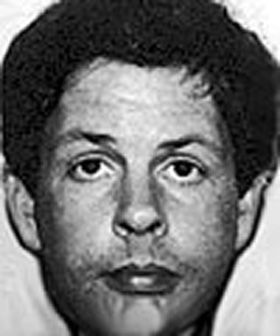 Brian Re-Appears
Brian Re-Appears
Herbert Richard Baumeister continued to live his facade. His marriage to Julie continued on its on-the-surface normalcy and their two Sav-A-Lot stores continued to occupy much of their daylight time. The cracks that had, up until the mid 1990’s, been invisible to others were now beginning to manifest. The strains of a sexless, loveless marriage were appearing in the mannerisms and on the expressions of especially Julie. People at home and in the neighborhood were talking. Professionally, their business began suffering. By the end of 1994, the Sav-A-Lots had taken a plunge. Shoppers declined; bills soared. Julie, tired of the bickering, the financial dilemmas and of a fairy tale life that never quite matched Cinderella, threatened divorce. As another new year opened, however, she did not act. Instead, she sat by and watched her business decline, her marriage sour and her husband grow stranger.
At the work place, Herb’s ever-darkening moods were venting on his employees. He demanded grueling work and unfair attention from them, acting as if he were some sort of king who deserved the peons’ praise; he fired those who wouldn’t comply to unjust treatment. Yet, his own workaday behavior was a farce – he would, say his employees, disappear for hours, then return reeking of alcohol and barking orders through whiskied-up breath. The once-tidy stores had become, under the lack of Baumeister attention, sloven. “Everything was so dirty,” remembers one of Herb’s clerks, “Everywhere you looked there were mountains of garbage bags. It was like working in a garbage heap.”
A Year Had Passed
Almost a year had passed since Virgil Vandagriff and Mary Wilson had begun their search for a man named “Brian Smart.” His real identity and his house of mannequins remained a mystery.
“Whatever leads we could have taken went nowhere,” Vandagriff states. “Personally, I didn’t feel there was a whole lot of cooperation between the city police and the Hamilton County officials whose attitude, I sensed, was one of ‘These folks here are rich and therefore above suspicion.’ But, in truth, there weren’t many hard leads, so we couldn’t push too far.”
“Hamilton was Indiana’s fastest-growing, wealthiest county, its median family income of $87,168 more than twice that of the rest of the state’s,” to quote the book, Where the Bodies Are Buried, “The average home went for $106,500, just a swift 25-minute highway commute north of Indianapolis, (it) was dotted with picture-perfect older communities, postcards of suburban middle America.”
A Lead Emerges
The hard lead that Vandagriff and Wilson wanted did finally leap forward. Assuming the situation had cooled enough for his reappearance on the gay scene, Herbert Richard Baumeister decided to stop in at the Varsity Lounge on the evening of August 29, 1995. Present at the bar was Tony Harris who, having given up hope of ever seeing “Brian Smart” again, refrained from jumping out of his shoes with excitement. He chatted with Baumeister nonchalantly and then, at evening’s end, managed to record the license plate number of the pickup truck in which Baumeister drove away. The next morning, hearing what Tony had accomplished, Mary Wilson cheered.
Plate number 75237A belonged not to anyone named Brian Smart, but to a Herbert Richard Baumeister of Westfield, Indiana. He lived in an estate called Fox Hollow Farms with a wife and children. The manor house, Mary learned, boasted a swimming pool in the basement.
Now, the police were closing in and Herbert Richard Baumeister began to unravel.
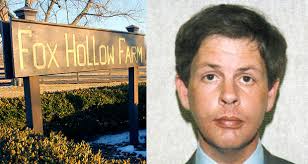 Herbert Richard Baumeister Is Accused
Herbert Richard Baumeister Is Accused
Mary and her boss, Lt. Thomas Greene, approached Herbert Richard Baumeister at his Washington Street store on November 1st after first surveying his actions for a term. Without pretense, Mary told him straight out why they were there – they were investigating the disappearance of several young men in the Indianapolis community, that he was suspect and they wanted to search his home. With the snub of a suffering saint, he refused, telling them that further communication must be channeled through his lawyer.
In the car afterwards, Greene told Mary that he thought Herb was not only “nervous beyond belief,” but “one of the weirdest guys I ever saw.”
Not to be outdone by Herb’s refusal, Mary attempted to out-angle him. She approached Julie Baumeister who. as co-owner of Fox Hollow, could legally authorize a ground-search of the connubial property. The detective found Julie just as stubborn as Herb had been, however. Evidently, Herbert Richard Baumeister had told Julie that he was being falsely accused of theft and, if approached, “Do not, under any circumstances, allow the police to conduct a search.” But, when Mary confided in the wife, explaining the real reason for their quest, “Julie looked at Mary as if she’d just dropped a nuclear bomb in her lap,” declare authors Weinstein and Wilson. “When she recovered enough to speak again, she informed Mary that they could not search her home. She was polite, but still stunned, almost beyond words. Mary gave Julie her card and urged her to call if she changed her mind.”
The Wife Of A Serial Killer Stands Firm
Julie’s refusal, the law knew, did not indicate her guilt. It was typical of the reaction of a wife who denies she has wedded someone with such a dark side. So much that, as things soured more and more at the Baumeister residence (obviously brought on by the tensions Herb was feeling by the police inquiries), Julie even phoned Mary Wilson one morning to blame her for causing her domestic life to worsen. “The police are not coming to my house,” she screamed, ” tearing through things, upsetting my children, all on the word of a psycho named Tony Harris whom my husband never even heard of!”
Vandagriff, as a private detective, denounces the waiting game, played by the county police at this point. “Mary Wilson, who wanted a search warrant, was unable to get one issued because Hamilton County was out of her jurisdiction. Hamilton County, in the meantime, would not cooperate. Why? Who knows? Whether it was their timidity to confront an otherwise-law-abiding citizen until they had conclusive proof, or whether they really didn’t believe Baumeister was guilty, I don’t know, but it might have saved a lot of trouble and the six-months wait it eventually took for Julie to finally open her back yard for inspection.”
June 1996
It wasn’t until June of 1996 – six months, as Vandagriff states –that Julie came to her senses. Over that time, her husband had become a paranoid wreck; when the Children’s Bureau decided to cancel its contract with the two failing Sav-A-Lot stores in May, he seemed to go off the deep end. Home life for the woman was now intolerable; both she and Herbert Richard Baumeister had initiated separate divorce proceedings; and her mind continued, through it all, to replay the doubts about Herb’s sanity that Mary had force-fed into her consciousness. Suddenly, she realized that she felt no loyalty to the thing that had been her husband.
On June 23, she called her lawyer, Bill Wendling, and told him to get in touch with Mary Wilson. Herb was currently out of town with son Erich visiting his mother at Lake Wawasee and she wanted to take this opportunity to tell Mary about the bones she had found in her back yard.
The Search Begins
The following day after Julie’s lawyer notified her, Mary Wilson drove anxiously to Fox Hollow Farms. Accompanying her were two very skeptical Hamilton County officials, Captain Tom Anderson of the County Sheriff’s Office and a detective, Jeff Marcum. In truth, Anderson was sure that the “human remains” Wilson hoped to find would turn out to be animal bones. He was not too shy, even to Mary’s face, to directly apprise the woman’s suspicions as “bullshit.”
Julie Baumeister, with attorney Wendling at her side, met the law enforcement people at her front door that afternoon and led them through the house to the wooded back yard. There, she pointed to the spot where, two years earlier, her son Erich had found a skeleton. The reason she had not notified the authorities until now, she claimed, was because she had believed Herb’s story about the bones being no more than a dissecting skeleton; his recent erratic actions, however, filled her with new doubts.
The Yard Of A Mad Man
The yard, at first glance, looked normal. But, as the men began to kick through the low grass and patches of dirt just beyond the back patio, they encountered a bone about a foot long, charred from having been burned. They weren’t sure if it was human. Then, as their eyes focused on the area immediately around them, it quickly became apparent that those many pebbles and rocks strewn across the flat cover were not pebbles and rocks – but fragments of bone. Lawyer Bill Wendling, watching the police scoop up one chipped and broken bone after another, now looked down at his own feet. Like evidence that followed the old adage, “so obvious, it’s unclear,” he realized in a chill that he too was standing on what resembled bone chips – here where the Baumeister kids played their innocent child games. At one point, he leaned over to pick up what were obviously human teeth. Pieces of bone lay everywhere.
Still, the county people on site were unconvinced that what they were gathering and taking photographs of were human. On this point, they drastically contended with Mary Wilson. Say Weinstein and Wilson in Where the Bodies Ate Buried: “Unlike her law enforcement counterparts from Hamilton County, (Mary) had heard the fear in Tony Harris’ voice. She’d seen first hand how nervous Herbert Richard Baumeister had been and how he had done everything in his power to keep her off his land, including lying to Julie about their investigation. Now she knew why.” She delivered the bags of “evidence” to Forensic Anthropologist Stephen Nawrocki at the University of Indiana for an examination. His answer was fast-coming: “They’re human. They’re recent. And they’ve been burned.”
More Bodies
The next day the police returned to the scene of what looked like one of the worst crimes Indiana ever encountered. It began to appear now that Herbert Richard Baumeister’s homemade graveyard might contain the remains of those many young homosexuals who, over several years, had vanished from the streets of Indianapolis.
This time, other officials joined the original search party to conduct a thorough “dig” of the premises. Among the group was a prosecuting attorney named Sonia Leerkamp and a half-score of detectives. Nawrocki came too, with two assistants, Matt Williamson and Christopher Schmidt, to perform a scientific exhumation of the what was obviously a secreted cemetery. The anthropological team began the hunt by placing small orange flags into the ground wherever a bone fragment appeared. In only a half-hour, they dropped nearly a hundred such markers. Summing it up, Nawrocki exclaimed, “It looks like a mass disaster scene.”
While the dig continued into the late hours, other policemen checked out the interior of the Baumeister home. They found the mannequins, the wet bar, the pool, just as Tony Harris had described them. However, they uncovered something that Tony had not seen the evening of his encounter with Baumeister — a semi-hidden video camera that, the police immediately suspected, had been used to tape the strangulations. The case was turning more bizarre by the hour.
The Custody Battle Front
Julie grew anxious about the safety of her son Erich who was with Herbert Richard Baumeister at Lake Wawasee. Reality seeping in, she feared the limits to which Herb might go if he found out what was happening at home. Prosecutor Leerkamp and a county judge drew up custody papers to remove the boy from his father’s presence.
Efforts were made by Herbert to hold onto his son, but came to no avail. He had no reason to suspect that his secret had been literally uncovered back at Fox Hollow, and he figured this custody action was just a ploy by Julie to counteract his latest divorce movements. When the police showed up with the proper papers to escort the child home, Herb released him calmly and without menace.
Back At The Ranch
Back at the estate, plenty was happening. County interrogators, led by sheriff’s detective Kenneth Whisman, were beginning to put the pieces of the Baumeister puzzle together. Compost piles yielded heavy degrees of bones where, it appeared, the killer had burned his corpses under piles of leaves and garbage. They interviewed Tony Harris who told them of Herb’s obsession with strangling and “sexual asphyxiation.” A big question they had had – “How could Herbert Richard Baumeister have strangled and burned and buried these men without his family’s knowledge?” — was answered in an interview with Julie herself. She explained that sometimes, for several months at a time, especially summers, she and the children visited Widow Baumeister, leaving Herb alone at home. Balancing the times of the victims’ disappearances with the periods that she and her brood were away, the incidences matched.
Meanwhile, the excavations in the back yard went on without pause. The number of diggers had swelled to about 60 volunteers, mostly off-duty policemen and firemen. The first couple days’ search had produced an amazing 5,500 bones, teeth and bone fragments, which, according to Nawrocki, made up about four bodies. After they had combed the entire 18 acres of the Baumeister property, members of the team were soon to learn that their search was far from over.
Bones Without Boundary
Neighbors from an adjacent farm crossed into the police cordon to inform them that they had found evidence of yet more bones next door. They led investigators to an area cut through with a drainage ditch that separated the two properties. Here, in this ditch were so many human ribs, vertebrae and spines that one of the officials murmured, “Jesus Christ, they’re everywhere!”
The bones were so numerous and more intact than on the Baumeister land that they actually stuck up visibly from the mud. Shovels drew up not only more bones – but, with them, cans of Miller Genuine Draft beer (Herb’s favorite drink) and handcuffs that had probably bound the victims in death. By the time exhumation of this area ended – and by the time that the 140 bones were estimated as those belonging to another seven men – the mortal count had risen to (estimated) 11 men killed.
It would be September before the anthropologists were able to identify some of the bodies; disappointingly only four, and each of these gathered from dental records.. The four positively identified victims named were: Roger Allen Goodlet; 34; Steven Hale, 26′ Richard Hamilton, 20; and Manuel Resendez, 31. To this day, the remains of others found at Fox Hollow Farms wait to be identified.
Herbert Richard Baumeister Is Nowhere To Be Found
But, where was Herbert Richard Baumeister? He had absconded from Lake Wawasee and, like his victims, faded into the mist. The only clue the police had came from Brad Baumeister, Herb’s brother, who called Detective Whisman on June 29th, five days after the police found the graveyard behind the house. Brad told the policeman that his older brother had phoned him from the little Michigan town of Fennville, saying he was on a business trip and needed money quickly. After Brad sent the cash, he became aware of the goings-on at Fox Hollow and notified the authorities immediately.
As best can be determined, Herb, in his 1989 gray Buick, left Wawasee and headed north, arriving at Fennville around the 28th of June. The next day, he reached Port Huron where he again phoned Brad, asking for more money. By this time, Brad had spoken to Whisman who asked Brad to tell his brother, should he ring again, to have him call the police who wanted to talk to him. It was a futile request, he figured, but worth trying.
At this point, the fugitive entered Canada. As Weinstein and Wilson report in their book: “Ontario Provincial Police told the Indianapolis Star they believed Herbert Richard Baumeister arrived in Sarnia on June 30th, spending several days there before driving east along the Lake Huron shoreline to Grand Bend, Ontario.”
One Last Murder by Herbert Richard Baumeister
There, at Pinery Park, on the evening of July 3rd, Herbert Richard Baumeister would take his last life – his own. He put a .357 Magnum revolver barrel to his forehead and pulled the trigger. The note he left behind attributed his decision to a failing business and an irreparable marriage. But, there was no mention of the skeletons left behind him in Westfield.
Instead, his final words on the three-page suicide document explained that he would now eat a peanut butter sandwich, his favorite snack, then to “go to sleep.”
The evening before he died, a Canadian trooper had stopped him to ask why he was sleeping in his car under a nearby bridge. He told her that he was merely a tourist passing through and was grabbing a moment’s rest. At that time, she noted some luggage and what looked like a pile of videotapes in his backseat.
“Were these videotapes of the murders he committed in the pool at Fox Hollow Farms?” asks private detective Virgil Vandagriff. “We will never know, for after he died there were no signs of the tapes on him nor in his car. He must have tossed them in a lake before he shot himself.” He muses, then adds, “And perhaps it is for the best.”
It is believed that Herbert Richard Baumeister murdered at least 20 men.
source: murderpedia | Joe Geringer | CrimeLibrary


